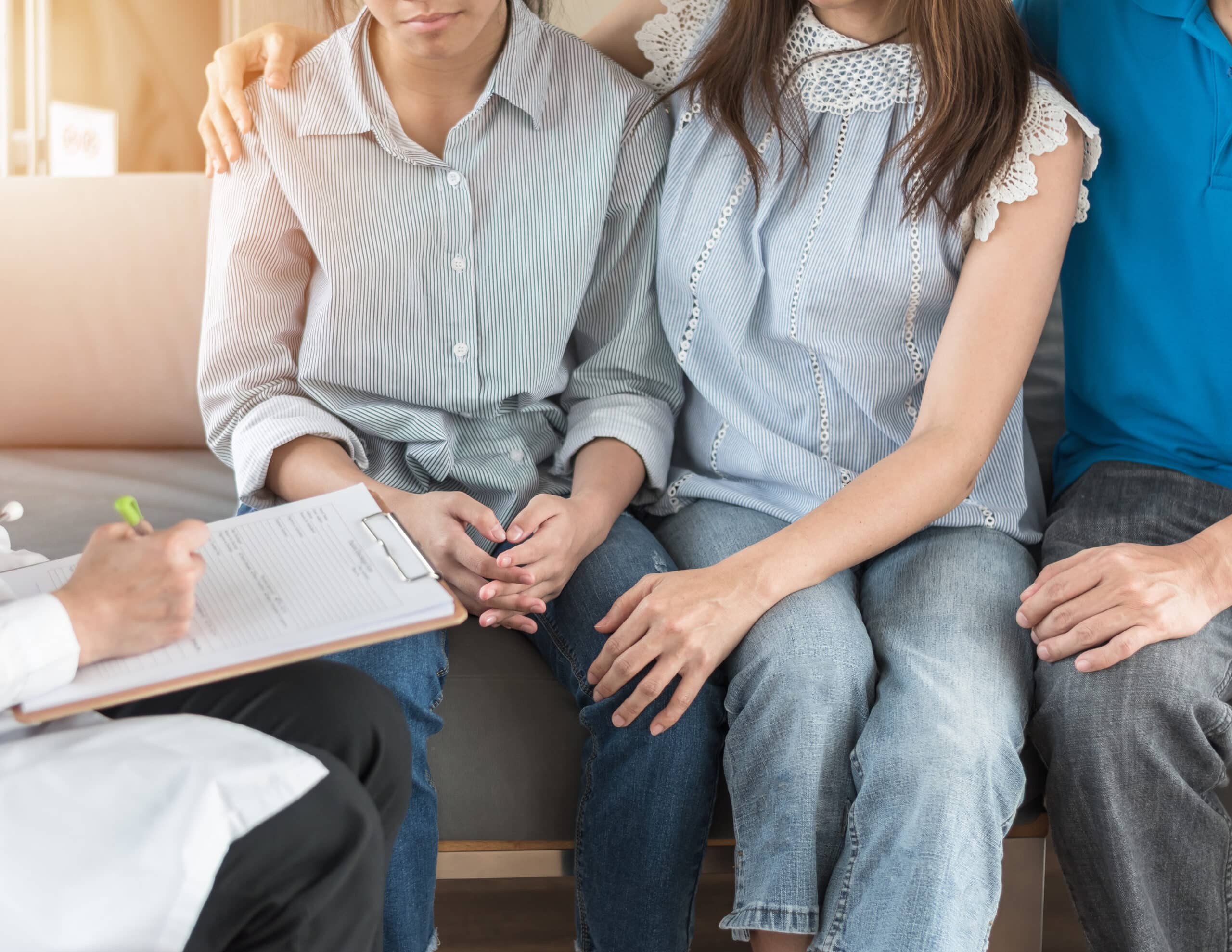Childhood trauma can be described as an event in a child’s life that is distressful or unpleasant and can have long-term effects on psychological and emotional well-being. Such include things like physical, emotional, or sexual abuse, neglect, or witnessing violence among others. This understanding of how to heal childhood trauma is important for a healthier and more meaningful life.
Dealing with and healing from childhood trauma is about more than just symptom management; it involves changing the impact of these early experiences on your current life. When they learn how to heal from childhood trauma, people are able to redefine their individuality, find better relationships, and become stronger.
The following guide will explore effective methods and steps on how you can get healed from childhood traumas. A comprehension of these steps coupled with finding suitable assistance will enable you to commence the journey toward recovery and personal development.
Is Your Trauma Affecting Your Daily Life?
What is Childhood Trauma?
Childhood trauma occurs during infancy through age 18 years which includes exposure to violence, abuse (physical/sexual/emotional), or neglect. These events disrupt a child’s feeling of safety leading to long-term impacts on their emotional state as well as psyche.
Childhood trauma refers to hurtful events that greatly affect a child’s growth and mental well-being. These include physical abuse, emotional maltreatment, neglect, and witnessing violence.
Impact on Emotional and Psychological Well-Being
The effect of childhood trauma can be severe and long-lasting as shown by the following:
- Anxiety and Fear: Anxiety and fear that do not go away
- Self-Esteem: Feeling bad about self or low self-esteem
- Trust Issues: Difficulties in forming and maintaining relationships”
- Emotional Management: Problems with controlling feelings or dealing with stress.
- Post-Traumatic Stress: Symptoms similar to those seen in post-traumatic stress disorder (PTSD), such as flashbacks or distress”
Knowing how to heal from childhood trauma entails addressing these impacts by seeking assistance for improved emotional and psychological well-being.
What are Adverse Childhood Experiences?
Adverse Childhood Experiences (ACEs) are stressful or traumatic events experienced during childhood that may have lifelong effects on health. Understanding ACEs is essential for understanding how to heal from childhood trauma.
Explanation of Adverse Childhood Experiences (ACEs)
ACEs are negative experiences or situations that interfere with a child’s sense of safety leading to emotional, psychological, and physical harm. These experiences are significant because they can shape how individuals manage stress and relate to others throughout their lives.
Examples and Categories of ACEs
- Abuse: When caregivers or others make physical, emotional, or sexual abuse
- Neglect: Absence of fundamental necessities like food, shelter, and moral support
- Household Dysfunction: This can mean domestic violence, substance use disorders, mental illness, or criminal activity within the family.
- Parental Separation or Divorce: Emotional anguish brought about by a split in the family unit.
- Loss of a Parent: Occurs when one’s father/mother dies leading to mourning and instability in life.
The way to heal from childhood trauma entails discerning these negative events and their ramifications. By identifying and working through ACEs people can begin to mend themselves and develop more resilient lives.
Types of Childhood Trauma
Childhood trauma has many forms each having its unique influence on emotional as well as psychological health. Consequently, comprehending these types is critical for proper healing from childhood trauma.
Physical Abuse
- Comprises hitting children with objects such as belts,
- Resulting in injuries that last forever emotionally.
Emotional Abuse
- Encompasses verbal assaults, threats as well as constant criticism,
- Which may lower one’s self-esteem and cause someone to be unstable emotionally.
Neglect
- Failure to provide basic human needs like food, shelter, and love indicates that parents have neglected their children.
- The long-term results of neglect are feelings of worthlessness.
Sexual Abuse
- This occurs when there is inappropriate sexual behavior or exploitation.
- It can cause deep psychological trauma and leave a child feeling unsafe.
Witnessing Violence or Abuse
- These can include domestic violence, bullying, or community violence.
- This may result in fear, anxiety, and lack of trust toward others.
Other Traumatic Experiences
- For instance, parental divorce, loss of loved ones, and natural calamities can form part of traumatic occurrences that children undergo.
- Such happenings destabilize the normalcy and sense of security for a child.
Knowing what kinds of childhood traumas are involved is seen as one important stage in the process of healing childhood trauma. Addressing each type may allow individuals to make sense of their own experiences and begin the recovery process.
How to Identify Adult Childhood Trauma
To heal from adult experiences with childhood trauma, it is essential to recognize these signs. Here are some common signs and symptoms to look for:
Common Signs and Symptoms
- Recurring flashbacks or vivid memories triggered by something that reminds you about past traumatic experiences.
- Anxiety/Depression: Constantly being sad/worried without knowing why.
- Reliability Problems in Relationships with Other People
Emotional and Behavioral Indicators:
- Emotional Instability: Mood swings or intense anger.
- Self-Destructive Behaviors: Substance abuse or risky activities such as drug abuse
- Avoidance: Refraining from anything resembling triggers.
Impact on Relationships and Daily Life:
- Problems in relationships are associated with an inability to trust or share intimacy.
- Issues in daily functioning include struggling with work or self-care.
- Difficulties in managing stress come from overreacting to it.
It is important to identify these signs for a better understanding of how to heal from childhood trauma. Once we know these symptoms, strategies for recovery can be developed as well as how overall wellness may be improved.
How to Heal from Childhood Trauma
There are several steps involved when healing from childhood trauma. Here is an easy guide on how one can effectively deal with childhood trauma:
Acknowledgment and Acceptance:
- Let your life be affected by the fact that you have had a traumatic experience in your childhood.
- Recognizing the existence of this kind of trauma is the first step towards knowing how to heal from childhood trauma.
Seeking Professional Help:
- Consult therapists or counselors who specialize in traumatology.
- Knowing how to navigate through the healing process after experiencing this type of trauma requires professional guidance and coping skills development.
Building a Support Network:
- Friends and family who give support should always surround you
- Find people who you trust enough to tell them about what happened so that it will help you heal from childhood traumas
Practicing Self-Care and Mindfulness:
Take part in activities such as exercising or meditating which enhances good health;
Trauma effects can be controlled using mindfulness practices leading you in how to heal from childhood trauma.
These steps are crucial in the journey of how to heal from childhood trauma, helping you build a healthier, more fulfilling life.
Childhood Trauma Therapy
Therapy plays a crucial role in how to heal from childhood trauma. Here’s an overview of effective therapy options:
Cognitive Behavioral Therapy (CBT)
- It focuses on the identification and change of negative thoughts as well as behaviors.
- This is key in treating childhood trauma by helping victims appreciate such disorders and deal with them successfully.
Eye Movement Desensitization and Reprocessing (EMDR):
- This involves distressing memory processing through guided eye movement.
- Traumatic memories usually have a significant emotional impact, which is why this technique remains one of the major ones in how to heal from childhood trauma.
Psychodynamic Therapy:
- Past experiences, unconscious thoughts, and their effect on present behavior.
- About how to heal from childhood trauma, psychodynamic therapy helps identify deep-seated matters linked to such cases.
Art and Play Therapy:
- Creative methods used for feeling expression as well as processing
- For children or people who have difficulties in expressing themselves verbally, it serves as an efficient tool that supports healing through creative expression concerning childhood traumatic experience management.
How Therapy Can Aid in Healing:
- Provides a secure environment where traumatized people can explore their feelings openly.
- Offers individuals skills and techniques that they can use to handle the effects of traumatic incidents
- Supports emotional and psychological recovery, guiding the journey of how to heal from childhood trauma.
Understanding and utilizing these therapy options can significantly aid in how to heal from childhood trauma, offering effective pathways to recovery.
Tired of fighting addiction and mental health struggles?
Ignoring both deepens the struggle. Our holistic approach—detox, therapy, and medication-assisted treatment—can help you heal. Take the first step today.
Conclusion
Healing from childhood trauma is a deeply personal journey, but it can lead to profound growth and a more fulfilling life. Understanding how to heal from childhood trauma involves acknowledging the impact of past experiences, recognizing the various forms of trauma, and seeking appropriate support. By exploring effective strategies such as therapy, building a strong support network, and practicing self-care, you can take meaningful steps toward recovery.
If you or someone you know is struggling with the effects of childhood trauma, remember that help is available. Reach out to Avisa it can make a significant difference. The process of healing is unique for everyone, but taking proactive steps is essential for personal growth and well-being.
Don’t wait to start your healing journey. Take the first step today by seeking support and exploring how to heal from childhood trauma. Your path to recovery and a healthier, happier future begins now.











